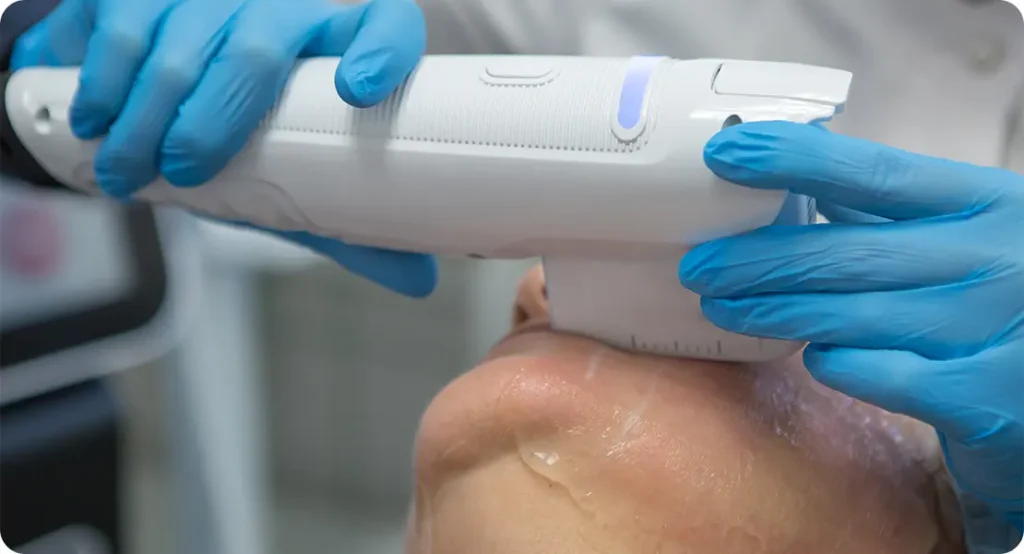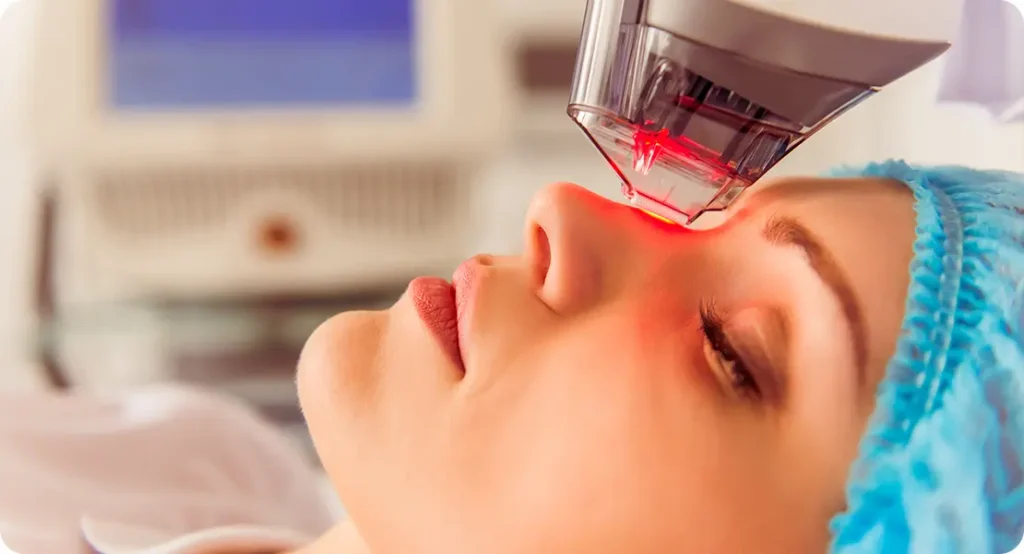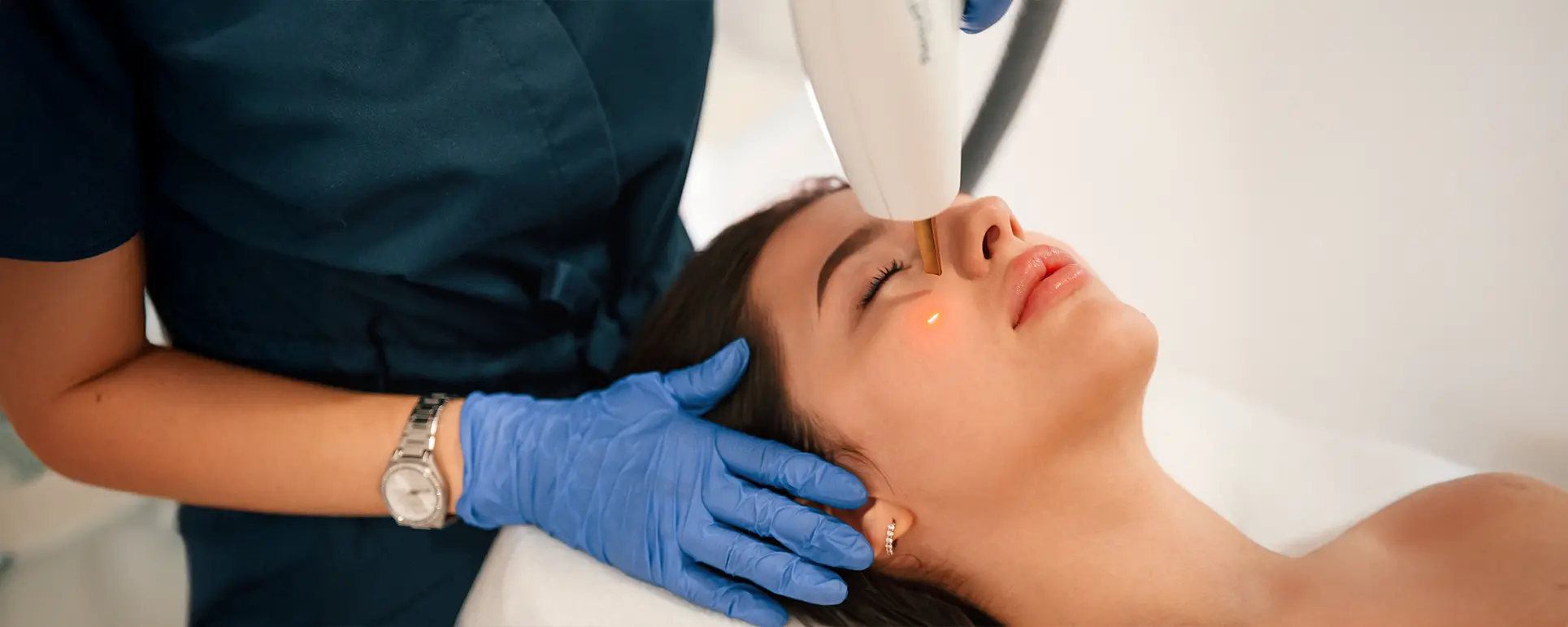Fraxel laser treatment is widely considered one of the most advanced and effective skin resurfacing solutions available today. It’s commonly used to improve the appearance of fine lines, acne scars, sun damage, uneven skin tone, and texture irregularities. But while the technology behind Fraxel is impressive, the truth is that your results don’t rely on the laser alone.
How you prepare your skin beforehandand how you care for it afterwardscan make a significant difference in the outcome. Going in with the right expectations, avoiding certain skincare products, and following your dermatologist’s guidance can help reduce downtime and enhance your skin’s healing response.
In this guide, we’ll walk you through the dermatologist-approved steps to take before and after your Fraxel session, so you can maximise your results and enjoy smoother, clearer, more radiant skin.
What Is Fraxel Laser Treatment?
Fraxel is a non-invasive fractional laser therapy designed to rejuvenate the skin from the inside out. It works by delivering precise, microscopic laser columns into the deeper layers of the skin, creating tiny areas of controlled damage. This process stimulates the skin’s natural healing mechanismsprompting the production of new collagen and healthy skin cellswhile leaving surrounding tissue intact to promote faster recovery.
Because it treats only a fraction of the skin at a time (hence the name “fractional”), Fraxel allows for effective results with minimal downtime compared to more aggressive laser treatments.
This treatment is popular among dermatologists and patients alike for its versatility and effectiveness. It can address a wide range of common skin concerns, including:
- Hyperpigmentation and sunspots
- Fine lines and wrinkles
- Acne scars and surgical scars
- Enlarged pores
- Uneven skin tone and texture
- Melasma (in certain cases, under specialist guidance)
One of the key benefits of Fraxel is that it offers visible improvement without the extended recovery time associated with fully ablative lasers. While some redness and peeling can be expected post-treatment, most people return to their regular activities within a few days.
Whether you’re looking to reverse signs of ageing, fade stubborn scars, or simply improve the overall appearance of your skin, Fraxel offers a targeted, science-backed solution that continues to be a go-to in modern dermatology.

Why Preparation Matters
Properly preparing your skin before a Fraxel laser treatment is more than just a recommendationit’s a critical step in ensuring optimal results. Think of it as training your skin to perform at its best. When your skin is in a calm, healthy state before the procedure, it responds better to the laser, heals more quickly, and produces more noticeable, longer-lasting improvements.
Prepping helps to:
- Reduce the risk of side effects, such as excessive redness, irritation, or prolonged swelling.
- Support faster healing, so you spend less time recovering and more time enjoying the results.
- Even out skin tone and texture pre-treatment, making the laser’s effects more uniform.
- Improve treatment penetration, especially if you’ve been using ingredients that unclog pores or reduce inflammation.
On the other hand, neglecting to prepare your skin can lead to:
- Increased sensitivity or inflammation during and after the procedure
- Delayed healing or post-treatment breakouts
- Dull or patchy results that don’t meet your expectations
Ultimately, preparation is about creating the ideal conditions for your skin to regenerate. Whether you’re treating sun damage, acne scars, or signs of ageing, starting with a well-prepped canvas gives your Fraxel session the best chance to shine.
Skincare Checklist: 7 Days Before Treatment
Getting your skin into its healthiest, most stable state before your Fraxel session can make a major difference in both your results and recovery. Here’s what to do in the week leading up to your appointment:
- Stop Using Retinoids and Exfoliating Acids
Discontinue any products containing retinol, tretinoin, glycolic acid, salicylic acid, lactic acid, or other exfoliating agents. These ingredients can thin the outer skin layer and make it more reactive, increasing the risk of redness, peeling, and prolonged sensitivity post-treatment. - Prioritise Hydration
Drink plenty of water throughout the day to support skin elasticity and overall resilience. Hydrated skin is more supple and better able to tolerate the laser’s effectsand it tends to heal faster, too. - Avoid Sun Exposure
Sunburned or tanned skin is more prone to inflammation and complications during laser treatments. Limit direct sun exposure, wear a wide-brimmed hat outdoors, and apply a broad-spectrum sunscreen (SPF 30 or higher) every morningeven if you’re staying indoors most of the day. - Review Medications and Supplements with Your Dermatologist
Some prescription medications, over-the-counter drugs, and herbal supplements can thin your blood, increase photosensitivity, or interfere with healing. Let your dermatologist know about everything you’re taking, from acne treatments to daily multivitamins. - Skip In-Clinic Skin Treatments
Avoid scheduling facials, waxing, microdermabrasion, dermaplaning, or chemical peels within a week of your Fraxel appointment. These can sensitise the skin and increase your risk of irritation or post-treatment flaking. - Clean Up Your Diet
Cut back on processed sugar, caffeine, and alcohol in the days leading up to your treatment. These can promote inflammation, dehydrate the skin, and slow the skin’s natural healing response. Instead, load up on antioxidant-rich foods, lean proteins, and healthy fats to give your skin the nutrients it needs.
Day of the Treatment: What to Expect
Feeling a little nervous before your Fraxel appointment? That’s completely normal. Knowing what to expect can help you feel more prepared and relaxed when the day arrives. Here’s how to get ready and what typically happens during your session:
- Come with clean skin: Skip makeup, moisturisers, serums, or sunscreen on the day of your appointment. Your skin should be freshly cleansed and completely product-free to ensure the laser penetrates effectively and evenly.
- Arrive a little early: Most clinics will apply a topical anaesthetic (numbing cream) before your treatment begins. Arriving 30–45 minutes early gives this cream time to take full effect, helping to minimise any discomfort during the procedure.
- Treatment time varies: The laser session itself usually lasts between 20 and 45 minutes, depending on the size and number of areas being treated. Smaller areas like the forehead or cheeks take less time, while full-face treatments or combination areas may require more.
- Expect some heat and tingling: While the numbing cream helps, you may still feel a warm, prickling sensation as the laser moves across your skin. Some people compare it to the feeling of a mild sunburn or tiny rubber band snaps.
- You’ll receive a post-care kit: Most clinics provide an aftercare pack immediately following your session. This typically includes a gentle cleanser, soothing creams (like aloe or a barrier-repair moisturiser), and a high-SPF sunscreen to protect your sensitive skin in the days ahead.
Immediate Aftercare: First 48 Hours

The first two days after your Fraxel treatment are critical for calming inflammation, protecting your skin, and supporting the healing process. Your skin will be working hard to recover and regenerate, so following these dermatologist-approved steps can help minimise discomfort and prevent complications.
- Expect Redness and Swelling
Don’t be alarmedredness and swelling are completely normal side effects of Fraxel laser treatment. Most people describe the sensation as similar to a moderate sunburn. Your skin may feel warm, tight, or slightly itchy during this time. The redness typically peaks within the first 24 hours and gradually subsides over the next few days. Swelling is most noticeable around the eyes and cheeks but usually resolves within 48–72 hours. - Cool It Down
To help soothe your skin and reduce swelling, apply cool (not icy) compresses several times throughout the day. Wrap a clean, damp washcloth in a soft towel and gently press it against the treated areas for a few minutes at a time. Avoid applying direct ice or anything frozen directly on your skin, as this could damage your already-sensitive tissue. - Gentle Cleansing Only
For the first couple of days, treat your skin with the utmost care. Wash your face using a mild, soap-free, fragrance-free cleanser recommended by your dermatologist. Use lukewarm water and your fingertips to gently cleanseno washcloths, cleansing brushes, or exfoliating sponges. Pat your skin dry with a soft towel (never rub), and avoid any harsh ingredients or active treatments like AHAs, BHAs, or retinoids. - Moisturise Generously
Keeping your skin hydrated is essential for both comfort and recovery. Use a rich, dermatologist-recommended emollient or recovery cream to help restore your skin barrier and lock in moisture. Look for products containing ceramides, hyaluronic acid, or panthenolingredients that soothe and strengthen healing skin. Apply your moisturiser multiple times a day, especially if your skin feels tight or dry. - Avoid Sunlight at All Costs
Your skin will be extremely photosensitive following Fraxel treatment, and any UV exposure can cause complications like hyperpigmentation or delayed healing. It’s best to stay indoors as much as possible for the first 48 hours. If you absolutely must go outside, wear a wide-brimmed hat and reapply a mineral-based, broad-spectrum sunscreen with SPF 30 or higher every 2 hours. Avoid direct sunlight, even through windows or while driving, as UV rays can still affect your skin.
Longer-Term Recovery: Days 3–7
As you move into the later stages of your recovery, your skin will begin to show signs of renewal. This period is often when visible peeling beginsand while it might look a bit dramatic, it’s a normal and healthy part of the healing process. Here’s what to expect and how to support your skin during this crucial phase:
- Peeling Is NormalEven Expected
Around day 3 or 4 post-treatment, your skin may start to flake, peel, or shed in small patches. This is your body’s way of getting rid of the damaged outer layers and revealing fresher, smoother skin underneath. The extent of peeling varies depending on your skin type, the strength of the laser, and how well you’ve followed aftercare. It may look like dry skin or resemble the peeling that happens after a sunburn. - No Picking or ScrubbingEver
As tempting as it may be, resist the urge to touch, pick, or exfoliate the peeling skin. Doing so can interfere with your skin’s natural healing process and increase the risk of scarring, infection, or hyperpigmentation. Let the flakes fall off on their ownthis patience pays off in clearer, more even-toned results. - Continue to Hydrate Inside and Out
Keep drinking plenty of water to maintain hydration from within, and continue applying a gentle, non-comedogenic moisturiser multiple times a day. Look for formulas that help reinforce the skin barrier, such as those containing ceramides, panthenol, or niacinamide. Avoid products with fragrance, alcohol, or strong actives that might irritate the newly exposed skin. - Ease Into ActivesGently and Gradually
By day 5 to 7, your skin may begin to feel less sensitive and more resilient. At this point, you can start reintroducing gentle active ingredientsif your skin tolerates it well. A hydrating serum with hyaluronic acid can help replenish moisture without irritation. A low-strength vitamin C serum may also be introduced to support collagen production and brighten your complexion. However, steer clear of retinoids, exfoliating acids (like glycolic or salicylic), or strong acne treatments until your dermatologist gives you the green light.
When to Call Your Dermatologist
While most people recover from Fraxel laser treatment without any complications, it’s important to know when something isn’t quite right. Your skin will go through temporary changes like redness, mild swelling, and peelingbut some symptoms go beyond the normal healing process and require medical attention.
Contact your dermatologist right away if you experience any of the following:
- Excessive or worsening pain or swelling that doesn’t improve after 48 hours or seems to intensify suddenly
- Yellow crusting, oozing, or pus on the treated areasthese could be early signs of an infection
- High fever, chills, or flu-like symptoms, which may indicate a more systemic response and should never be ignored
- Persistent burning or stinging that lasts beyond the first few days
- Unusual discolouration, such as grey, dark purple, or black patches, especially if they’re spreading or painful
Your provider will be able to assess your symptoms, rule out complications, and offer the appropriate carewhether it’s an antibiotic, topical cream, or just peace of mind.
Remember: It’s always better to check in early than to wait too long. Prompt attention can prevent small issues from turning into bigger problems.
Frequently Asked Questions (FAQs)
- How long do results from Fraxel laser last?
Results can last several months to years, depending on your skin condition and how well you maintain it with proper skincare and sun protection. - Can I wear makeup after Fraxel treatment?
You should avoid makeup for at least 48 hours after your session, or until your skin has fully healed and any flaking or redness has subsided. - Is Fraxel laser painful?
Most people report a mild stinging or prickling sensation during the treatment. A topical anaesthetic is usually applied beforehand to minimise discomfort. - How many sessions will I need?
It varies depending on your skin goals. Many patients see improvement after 1–3 sessions, but deeper issues may require more treatments spaced several weeks apart. - Can Fraxel be combined with other treatments?
Yes, but timing is crucial. Discuss combination options with your dermatologist to avoid overlapping recovery periods and ensure the best outcome.
Final Thoughts: The Secret to Smoother, Healthier Skin
Proper preparation and mindful aftercare can make all the difference in your laser treatment journey. If you’re unsure whether you’re a good candidateor want to plan your next sessionyou can get in touch with us to book a consultation for Fraxel laser treatment in London. Our specialists will guide you every step of the way.
References:
- Manstein, D., Herron, G.S., Sink, R.K., Tanner, H. and Anderson, R.R. (2004) ‘Fractional photothermolysis: a new concept for cutaneous remodeling using microscopic patterns of thermal injury’, Lasers in Surgery and Medicine, 34(5), pp. 426–438. doi: 10.1002/lsm.20048. Available from Wiley Online Library: https://onlinelibrary.wiley.com/doi/10.1002/lsm.20048
- Tierney, E.P. and Hanke, C.W. (2009) ‘Ablative fractionated CO₂ laser resurfacing for the neck: prospective study and review of the literature’, Journal of Drugs in Dermatology, 8(8), pp. 723–731. Available via ResearchGate: https://www.researchgate.net/publication/26725046_Ablative_Fractionated_CO2_Laser_Resurfacing_for_the_Neck_Prospective_Study_and_Review_of_the_Literature onlinelibrary.wiley.com+4researchgate.net+4pubmed.ncbi.nlm.nih.gov+4
- Tierney, E.P., Eisen, R.F. and Hanke, C.W. (2011) ‘Fractionated carbon dioxide laser treatment of photoaging: prospective study in 45 patients and review of the literature’, Dermatologic Therapy, 24(1), pp. 41–53. PubMed abstract available: https://pubmed.ncbi.nlm.nih.gov/21276157/ researchgate.net+3pubmed.ncbi.nlm.nih.gov+3onlinelibrary.wiley.com+3
- Laubach, H.-J., Chan, H.H., Rius, F., Anderson, R.R. and Manstein, D. (2006) ‘Skin responses to fractional photothermolysis’, Lasers in Surgery and Medicine, 38(2), pp. 142–149. Available via PMC: https://www.ncbi.nlm.nih.gov/pmc/articles/PMC3580978/ researchgate.net+15pmc.ncbi.nlm.nih.gov+15pubmed.ncbi.nlm.nih.gov+15
- American Society for Dermatologic Surgery. (2022). “Laser Resurfacing.” Available at: https://www.asds.net/skin-experts/skin-treatments/laser-resurfacing
